What is customer lifecycle management? A guide to growing customer value at each stage
Published on June 16, 2025/Last edited on June 16, 2025/9 min read
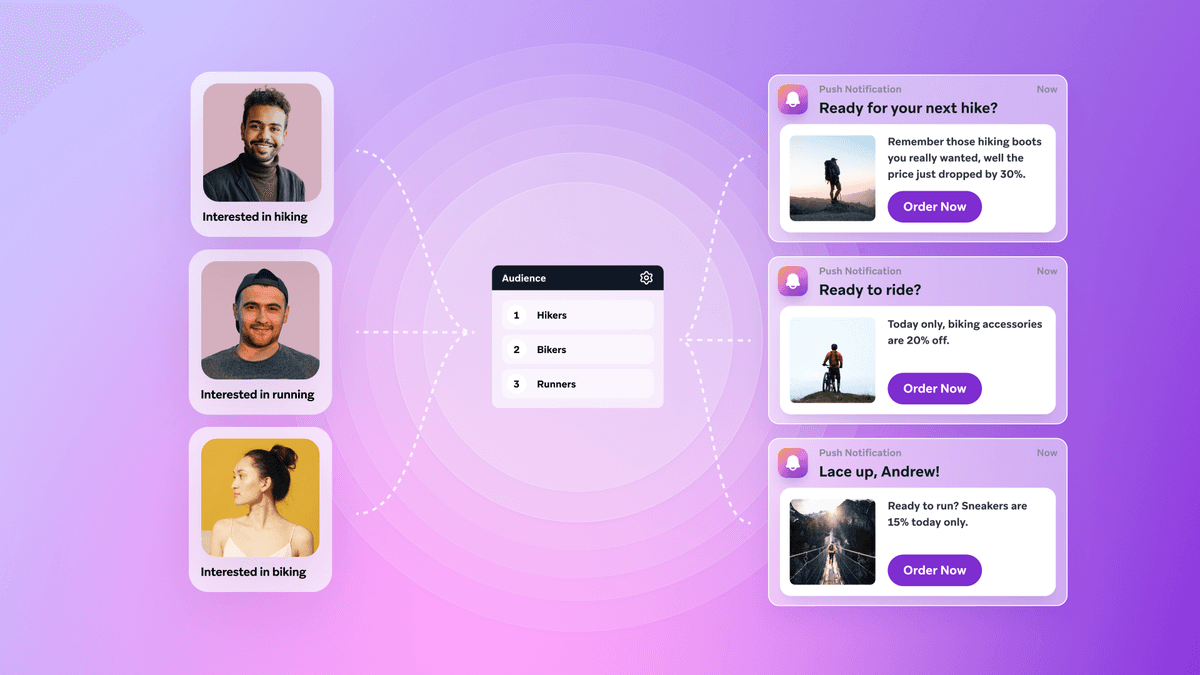
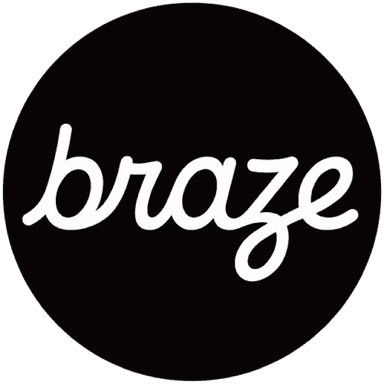
Team Braze
A great customer experience is one that happens across the full customer journey, not just at one moment. Customer lifecycle management tracks the wider picture, allowing brands to map out each stage and focus on adding value where it's needed most.
This guide will break down what customer lifecycle management really means, how it differs from CRM, and how marketing and product teams can use it to grow stronger, longer-lasting connections. Along the way, we’ll explore key lifecycle phases, modern CLM strategies, and real-world examples of brands driving better results.
Contents
- What is customer lifecycle management?
- How customer lifecycle management fuels marketing, product, and growth
- The five key customer lifecycle phases (and how to master them)
- Why agile customer lifecycle management software beats a legacy approach
- Customer lifecycle management best practices for growing value
- Choosing customer lifecycle management software: What to look for
- How top brands are growing LTV with Braze
- Final thoughts
- FAQs about customer lifecycle management
What is customer lifecycle management?
Customer lifecycle management is the practice of guiding people through the stages of their relationship with your brand. From the first time someone hears about you to when they make another purchase and long after, customer lifecycle management helps brands to shape experiences that drive deeper engagement, loyalty, and growth.
The customer lifecycle is a journey with several important steps: Discovery, activation, engagement, retention, and sometimes reactivation. Managing that journey means understanding where each customer is and responding with the right message at the right moment.
Customer lifecycle management is about using that information to create real-time, personalized interactions. Through these individual marketing campaigns, all tied together under lifecycle management, brands can turn insights into action so that a customer has the best experience possible with them.
How customer lifecycle management fuels marketing, product, and growth
Customer lifecycle management isn’t limited to those individual marketing campaigns. It connects marketing, product, and growth teams around a shared goal—to build stronger, longer-lasting customer relationships.
For marketing teams, customer lifecycle means reaching customers with targeted, personalized messages that feel natural, not disruptive. Product teams use customer lifecycle management strategies to improve user experience inside the app or product, guiding new users toward key actions and keeping existing customers engaged. Teams can take advantage of customer lifecycle management to help turn buyers into advocates, to retain customers, and to minimize any moments of friction or frustration, while smoothly transitioning the user back to a pleasing experience.
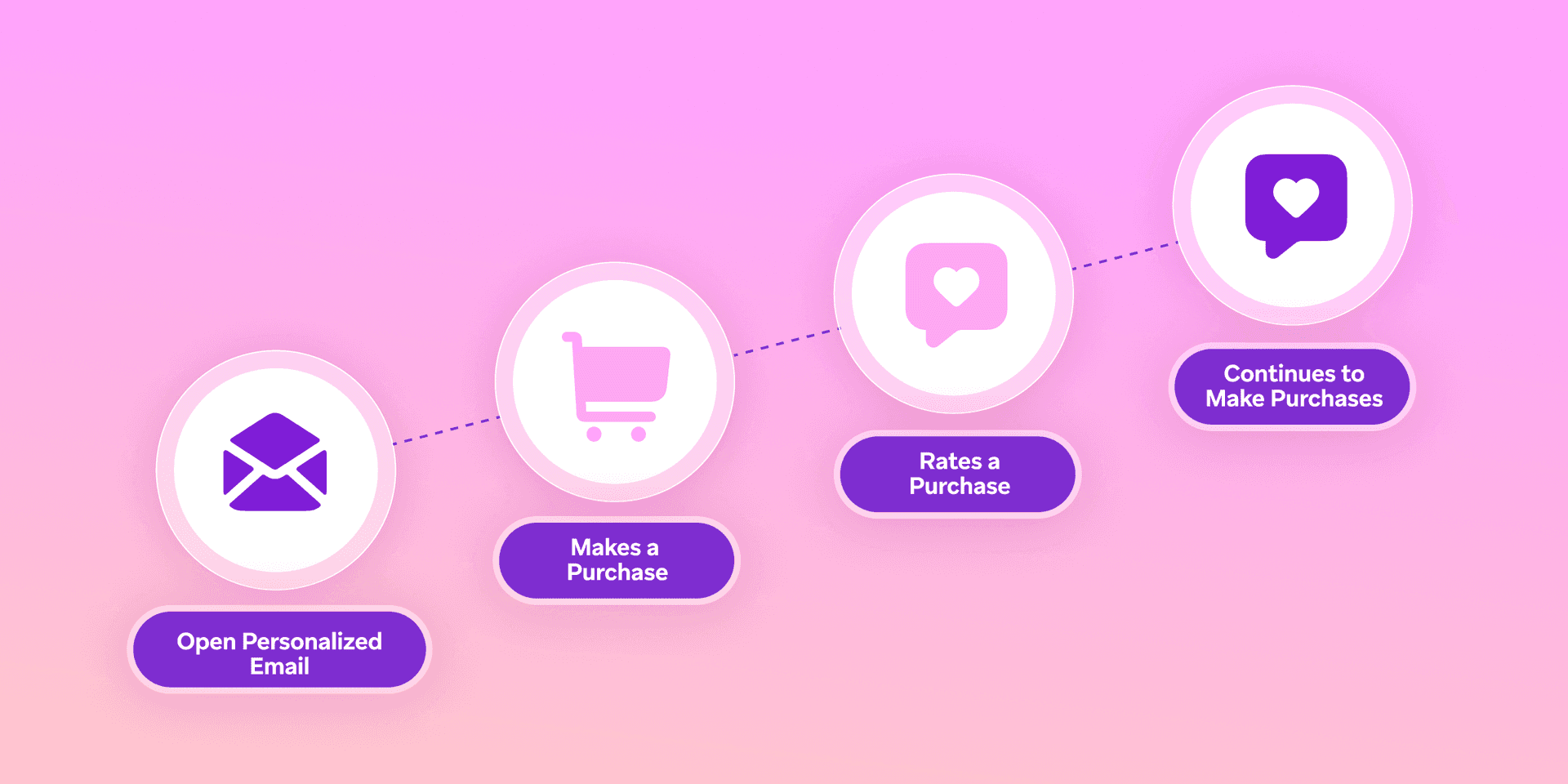
The five key customer lifecycle phases (and how to master them)
Each customer journey is unique, but most follow a predictable pattern. Understanding these five customer lifecycle phases helps brands create smarter, more responsive experiences.
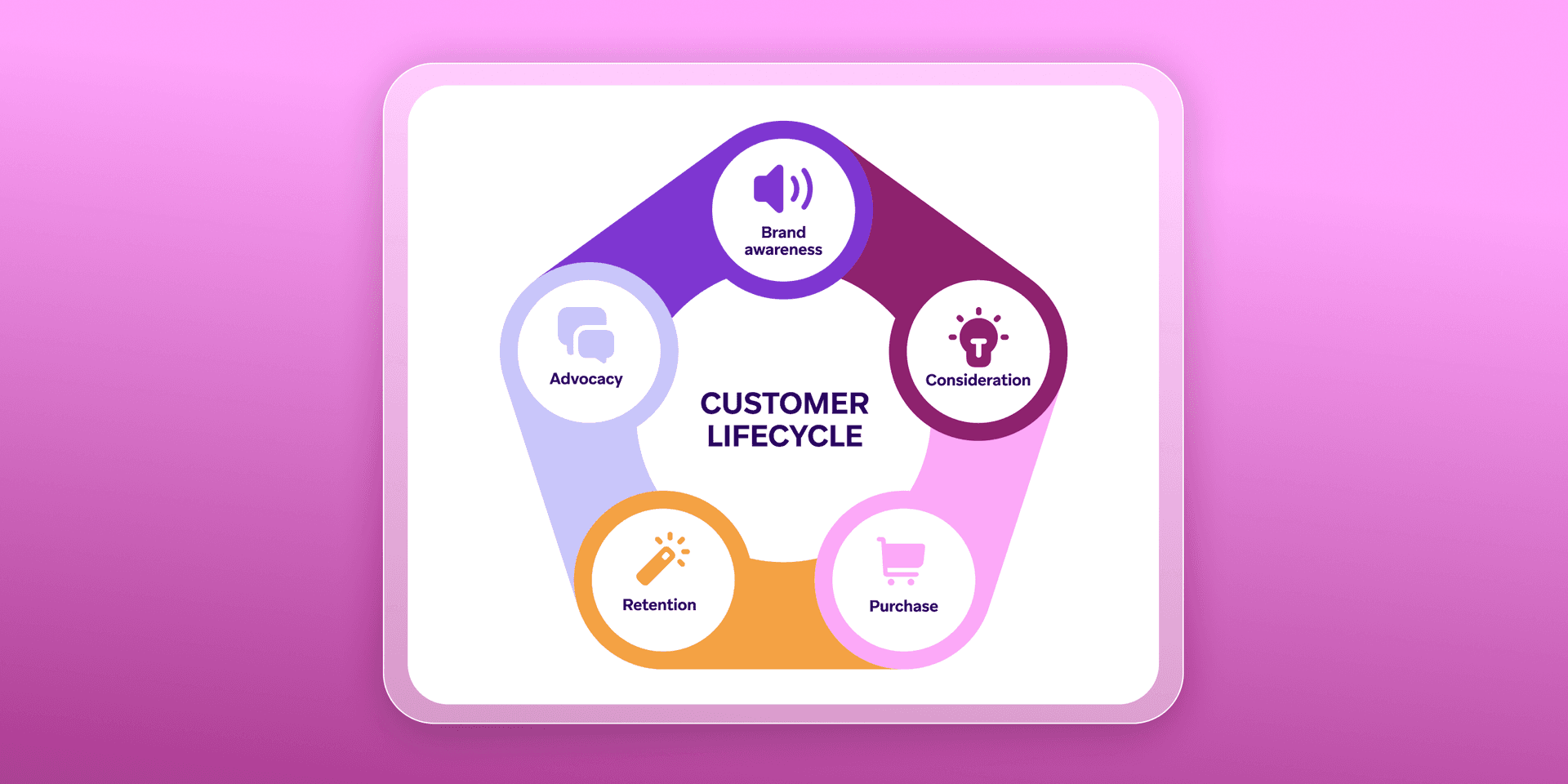
Acquisition: Building the right first impression
Acquisition is about attracting the right customers. It’s not just reaching a wide audience, it’s reaching the people who are most likely to find value in what you offer. Paid media, organic content, referrals, and app store optimization play a role here.
Clear messaging, fast onboarding, and seamless user experiences set the stage for successful activation once someone takes that first step.
Activation: Turning interest into meaningful action
Once a customer signs up, downloads, or shows interest, activation is about helping them reach an early key moment. That might mean completing a profile, making a first purchase, or taking another key action inside your app or platform.
Effective activation can reduce early churn by quickly proving your product’s value. Cross-channel welcome campaigns, in-app guidance, and thoughtful nudges can make a major difference.
Engagement: Creating consistent, valuable interactions
Engagement is about encouraging customers to keep interacting with your brand, products, or services, whether that’s through using features, consuming content, or responding to personalized messages.
Targeted, cross-channel communication helps deepen engagement, and modern platforms like Braze make it possible to trigger these actions based on real-time behaviors.
Retention: Keeping customers loyal and connected
Retention is about building a relationship that lasts. The goal is to deliver ongoing value so customers continue to choose your brand over competitors.
Retention marketing efforts might include personalized offers, milestone celebrations, re-engagement campaigns, or community-building strategies.
Reactivation: Winning back at-risk or inactive users
No matter how strong your strategy, some customers will drift away. Reactivation focuses on bringing them back through thoughtful, relevant outreach.
Dynamic win-back campaigns, reactivation incentives, and personalized messaging based on past behavior can reignite interest. Lifecycle management makes it easy to spot and target those customers most at risk of dropping off.
Why agile customer lifecycle management software beats a legacy approach
Legacy customer lifecycle management systems were built for a different era. They’re often rigid, slow to adapt, and unable to play with external tools. Marketers using legacy tools might find themselves stuck in endless batch-and-blast campaigns, unable to respond quickly to changing behaviors or preferences.
Modern customer lifecycle management software is different. Agile, customer-centric platforms like Braze are based on streaming, giving brands the ability to listen, understand, and act as customers move in and out of each stage. Instead of relying on outdated data or fragmented touchpoints, teams can orchestrate dynamic, personalized experiences based on what customers are doing right now, not what they did last month.
Customer lifecycle management best practices
Best practices for managing the customer lifecycle effectively prioritize agility, personalization, and real-time engagement. Learning how to stay responsive, experiment with new ideas, and create value at each stage is essential. Here’s how modern teams do it:
Segment based on behavior, not assumptions
Not every customer follows the same path. Behavioral segmentation groups users based on actions they take or don’t take, making it possible to deliver highly relevant experiences. Instead of guessing based on demographics or generic personas, brands can respond to real signals like product usage, session frequency, or in-app purchases.
Dynamic audiences in Braze update automatically as customer behavior changes, so your messaging can stay relevant.
Orchestrate journeys across channels
Great customer experiences rarely happen on a single channel. Real-time journey orchestration connects touchpoints across email, push notifications, in-app messages, SMS, and more, creating a seamless conversation no matter where the customer is or what channel they’re on.
With Braze, marketers can build, adjust, and optimize journeys based on live data, helping brands meet customers where they are with the right message at the right time.
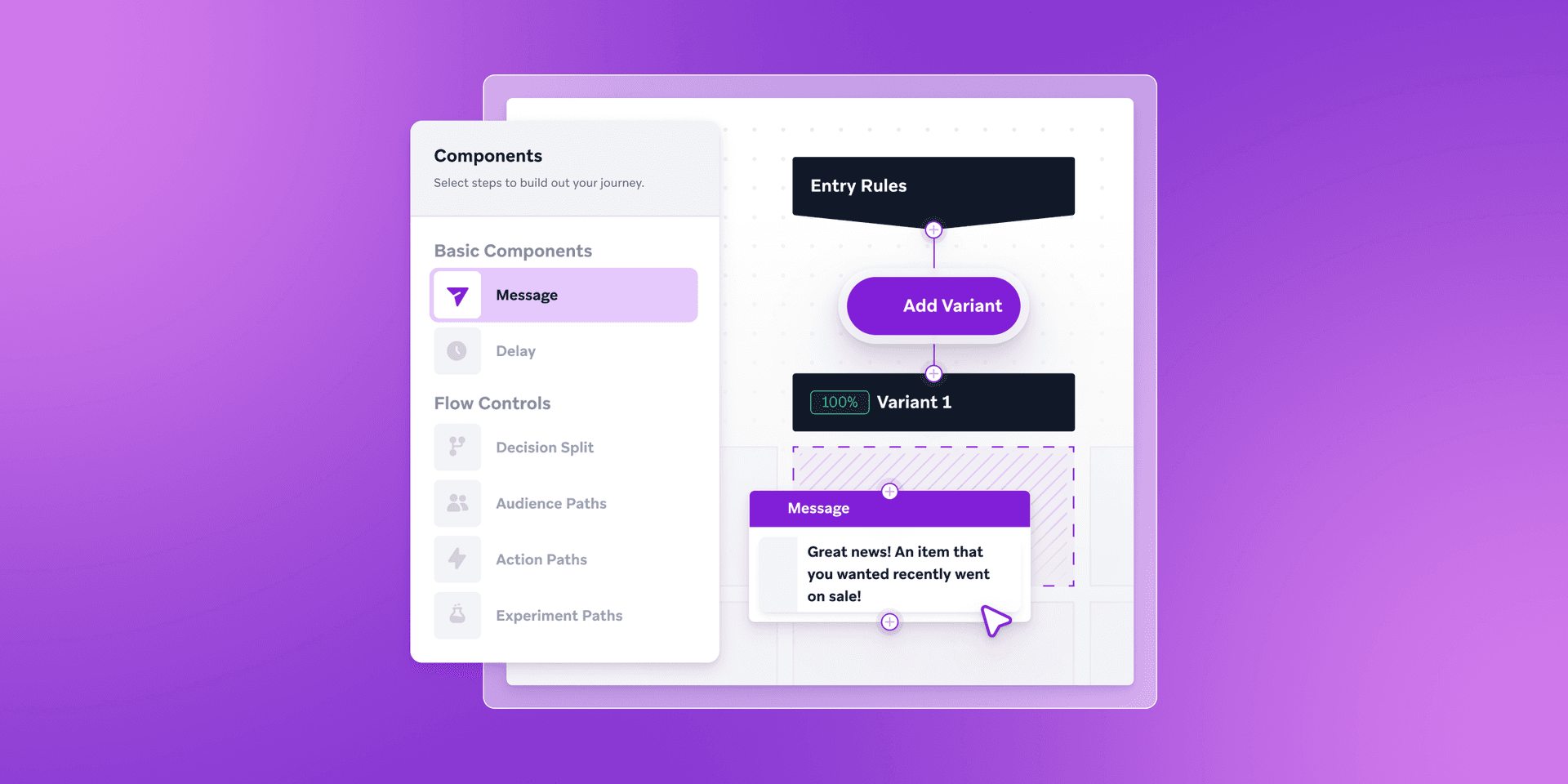
Experiment and optimize with A/B testing and multivariate testing
What works for one audience might not work for another. Experimentation lets teams test different messages, channels, timing, and creative strategies to see what drives better outcomes.
Using the right tools, brands can run large-scale A/B tests across the entire lifecycle, learning which journeys improve engagement and retention.
Personalize dynamically at scale to drive relevance
Dynamic personalization taps into customer data, like browsing behavior, purchase history, and app activity, and harnesses the power of zero- and first-party data to tailor messages, offers, and experiences for each individual.
Connected Content in Braze makes it easy to populate messages with dynamic, personalized elements, helping brands stay relevant without adding manual work.
Collaborate across marketing, product, and support teams
Lifecycle management works best when Marketing, Product, and Support teams work together. Sharing insights across teams helps create a consistent customer experience and makes it easier to spot gaps or friction points. For example Baze allows you to integrate data from older technologies and different streams, giving you a unified vision of each customer.
Regular check-ins, shared dashboards, and cross-functional experimentation can help teams stay aligned around what really matters–growing customer value over time.
Choosing customer lifecycle management software: What to look for
The right customer lifecycle management software makes it easier to connect, personalize, and grow customer relationships over time. But not all platforms are built the same. When evaluating your options, here’s what to prioritize:
- Built on streaming data
- Large partner ecosystem
- Cross-channel journey orchestration capabilites
- Testing and optimization features
- Personalization and dynamic content features
- Scalability for growing customer bases
Modern platforms like Braze offer these capabilities, helping brands move faster, personalize smarter, and drive long-term growth.
How top brands are growing lifetime value with Braze
Real-world results speak louder than theory. Here’s how two brands used customer lifecycle management strategies powered by Braze to drive engagement, boost retention, and grow long-term value.
Floward’s growth strategy is blooming
Floward is a leading online flower and gifting business operating across the Middle East and the UK. Their mission is to make sending love as seamless as ordering coffee, with fresh, same-day deliveries and a smooth digital experience.
The challenge
Floward set out to boost engagement and conversion during the high-stakes Valentine’s Day season. But rising new user churn and low re-engagement rates among lapsed customers were cutting into sales and limiting visibility when it mattered most.
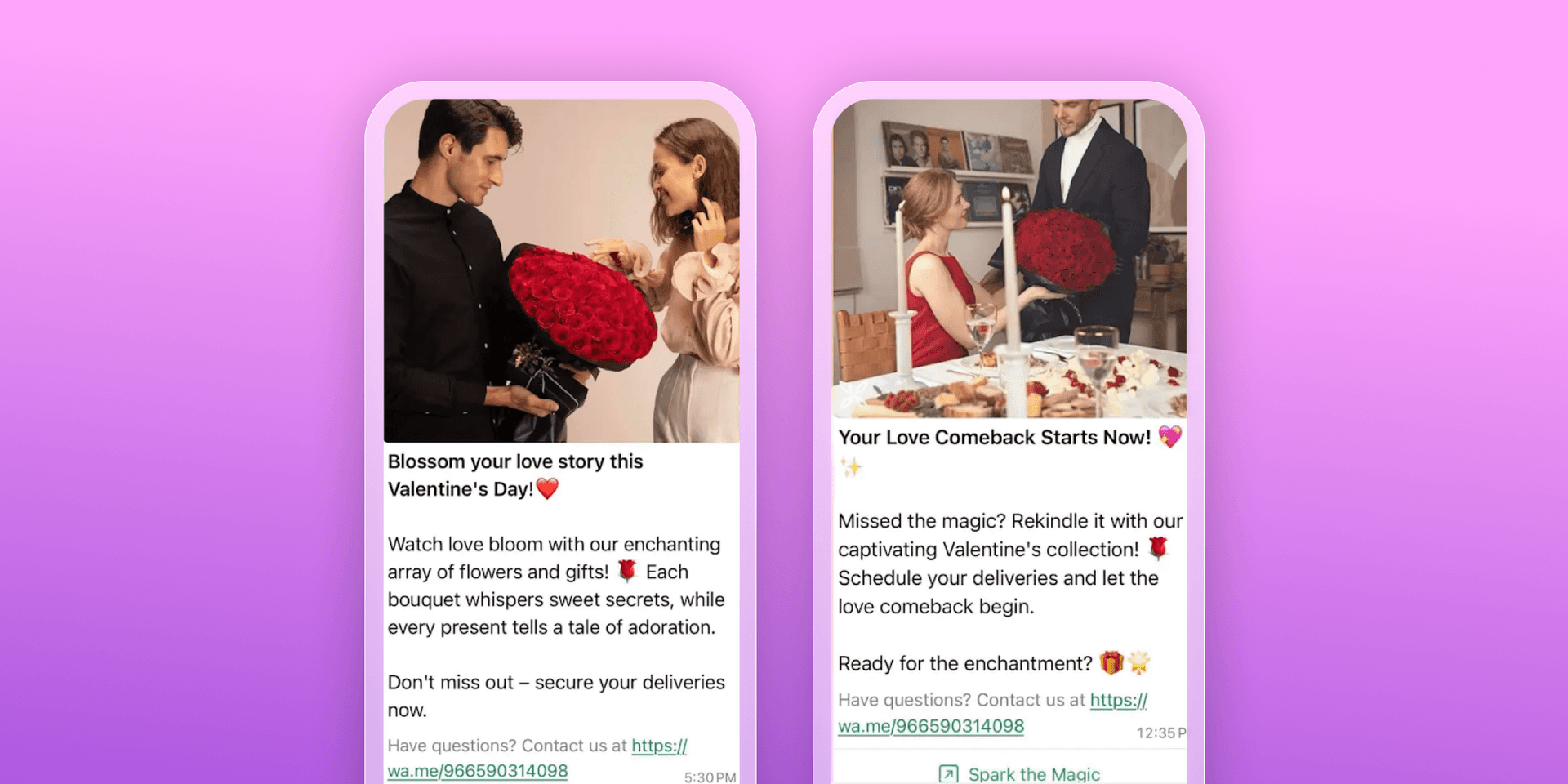
The solution
Floward used Braze Canvas, our no-code journey orchestration tool, to launch a cross-channel strategy spanning WhatsApp, push, in-app messages, and email. They ran an RFM analysis to segment customers by behavior, then built tailored campaigns for each group. With real-time data and reporting, the team could track performance and make on-the-fly adjustments to improve results.
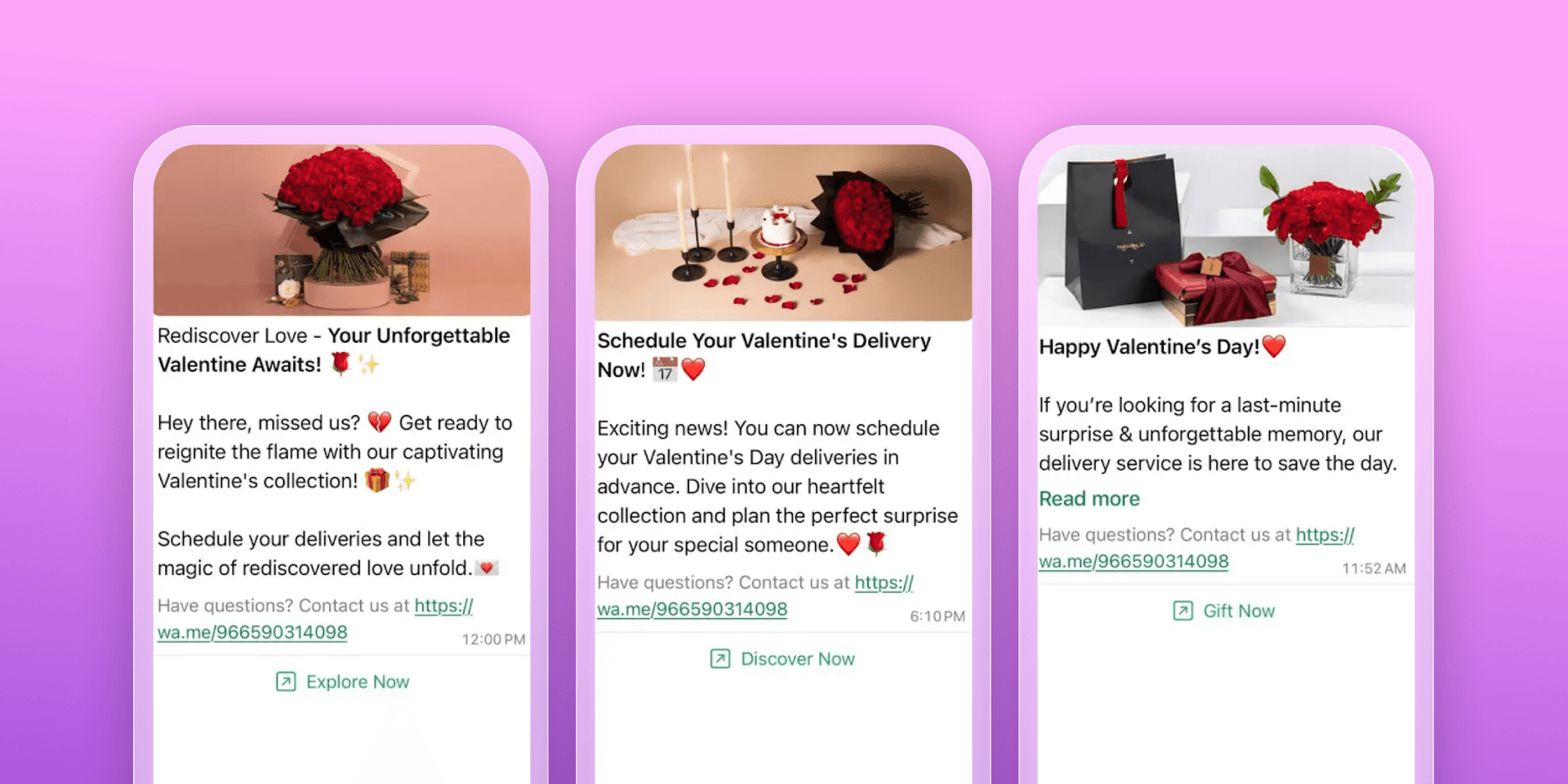
The results
Floward’s strategy delivered stronger engagement and higher conversion rates across the board. WhatsApp proved the top-performing channel, driving the most revenue and conversions while reactivating lapsed users. The result? Better retention, greater lifetime value, and a more loyal customer base.
KFC boosted revenue by activating customers
KFC is known worldwide for its signature fried chicken, with over 22,000 locations in more than 150 countries. In Ecuador alone, the brand operates 148 restaurants and holds strong local popularity.
The challenge
KFC Ecuador set out to drive more conversions from users who hadn’t redeemed their mobile coupons.
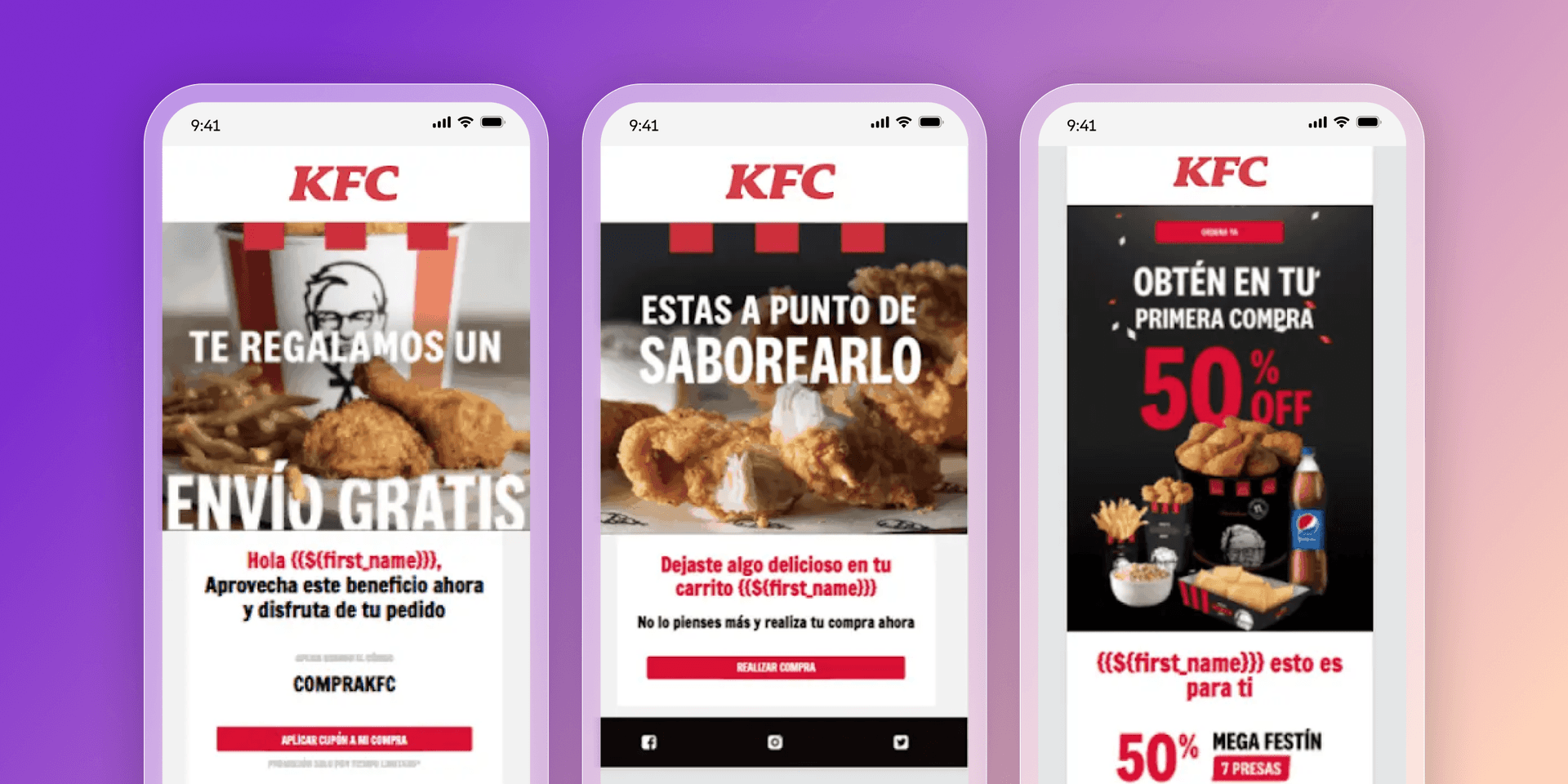
The solution
KFC Ecuador used Braze Canvas and the Intelligence Suite to build targeted digital engagement campaigns, quickly testing message variants to see what resonated best.
The results
With Braze Canvas, KFC Ecuador identified new customer segments and delivered targeted, contextual messages that reduced abandoned coupons and boosted revenue by 15%.
Final thoughts
The strongest customer relationships aren’t built in a single interaction. They grow over time, shaped by each message, product experience, and point of contact along the way. Customer lifecycle management gives brands the tools to meet people where they are, respond in real time, and build loyalty that lasts.
With agile, customer-centric platforms like Braze, it’s easier than ever to move beyond fragmented campaigns and create lifecycle strategies that adapt, personalize, and grow with your audience. Wherever your customers are in their journey, the right approach to CLM can turn moments into momentum and drive lasting value for your brand.
In this webinar, we'll talk with KFC and CVS Health about the tools and tactics they've used to strengthen engagement, deepen retention, and create sustainable customer relationships built on true loyalty.
FAQs about customer lifecycle management
Customer lifecycle management is the process of guiding customers through different stages of their relationship with a brand, from first interaction to loyalty and reactivation. Customer lifecycle management focuses on creating personalized experiences that adapt in real time, driving engagement, retention, and lifetime value.
Lifecycle management is important in marketing because it helps brands deliver the right message at the right time, based on where each customer is in their journey. Effective customer lifetime management can improve engagement, reduce churn, and increase the overall value of customer relationships.
The key stages of the customer lifecycle are acquisition, activation, engagement, retention, and reactivation. Each phase represents an opportunity for brands to create meaningful interactions and build stronger, longer-lasting relationships.
To manage the customer lifecycle effectively, brands should segment audiences based on behavior, orchestrate real-time journeys across channels, experiment with different strategies, and personalize content dynamically. Collaboration across Marketing, Product, and Support teams is also essential for success.
Customer lifecycle management tools include platforms that support real-time data activation, behavioral segmentation, journey orchestration, testing, and personalization. Modern platforms like Braze help brands create agile, customer-centric strategies that grow lifetime value at scale.
Related Tags
Be Absolutely Engaging.™
Sign up for regular updates from Braze.
Related Content
View the Blog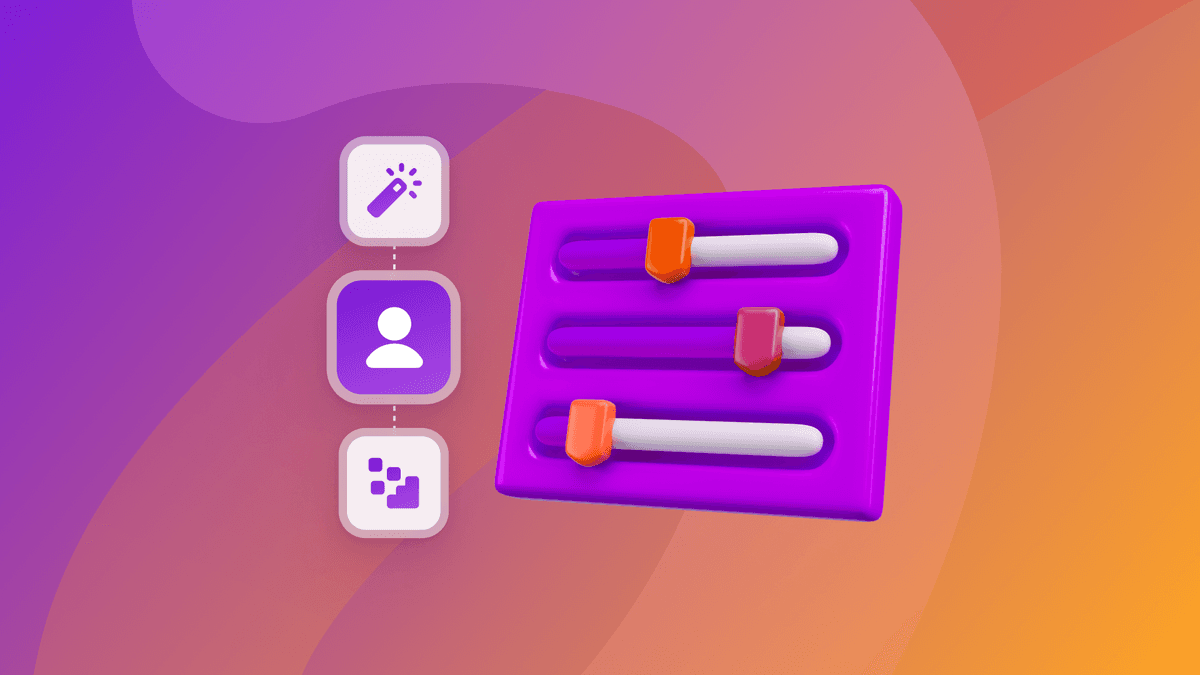
How behavioral marketing turns data into personalized experiences

Team Braze

How Braze supports exceptional customer engagement during Black Friday, Cyber Monday, and beyond

Todd Grennan
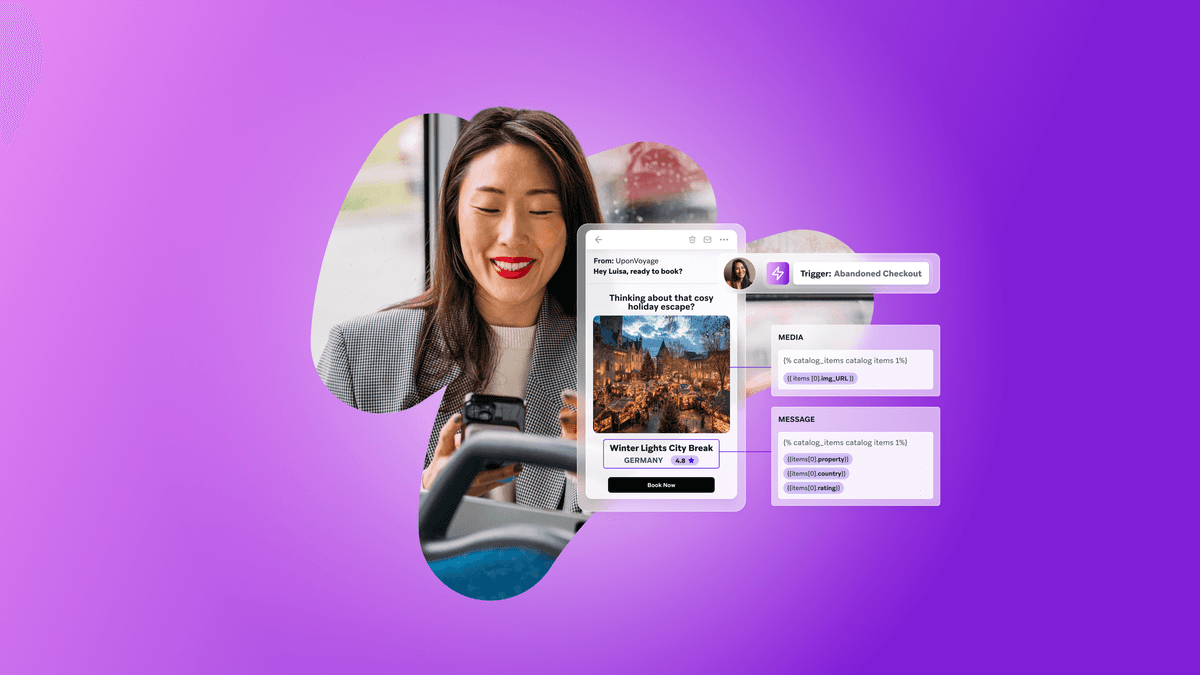
How to overcome messaging fatigue this holiday season
